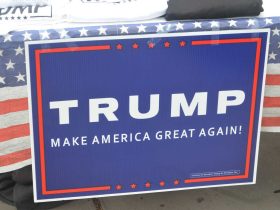Despite being situated a mere 13 miles from Philadelphia’s Independence Hall, Conshohocken, Pa., may strike you as an unlikely locale for a revolution—let alone a financial insurgency. And yet “Conshy” (as the locals sometimes refer to it) is where executives at
Hamilton Lane,
an asset manager with $817 billion under management, are fighting to democratize investing.
Specifically, Hamilton Lane (ticker: HLNE) is opening up the world of private investments—in this case private equity, heretofore the purview of institutions and the uber-wealthy—to ordinary investors.
“The world is going to look pretty different for retail investors a few years from now,” says Hartley Rogers, Hamilton Lane’s chairman. Rogers, son of the noted MIT mathematician, tells me his firm, which places some $30 billion a year into newly raised private-equity funds, has two funds for high-net-worth retail investors, including its $975 million Private Assets fund.
Truth is, Hamilton Lane’s work is really just one battle in what’s best described as a tug of war being fought on multiple fronts. A bevy of Wall Street players, including BlackRock, J.P. Morgan, and Prudential, are pushing to make private markets available to retail. Stymieing them have been high minimum investments (anywhere from $250,000 to $25 million), long lockup periods (10 years, for instance), complicated structures that create headaches during tax season, and requirements that investors have high salaries and/or substantial net worth. Now those hurdles are being swept aside.
“The idea of retail investors getting into private equity is a trend that is real and we expect to keep growing,” says Andy Sullivan, Prudential’s head of global investment management.
You might look askance at the “opportunity” to invest alongside the upper-crusties, but you should understand what’s going on, as you’ll soon be hearing about these investments from your broker or financial advisor—or at your neighbor’s next cookout.
Caveats abound. For one thing, tracking industry returns is next to impossible as there is no benchmark like the
S&P 500.
The funds can be leveraged. And fees range from significant to onerous—Hamilton Lane’s fund has an annual management fee of 1.5% and takes 12.5% of upside after a baseline return has been met.
Here’s why the industry is keen on selling to retail. Hamilton Lane says that total assets under management in alternatives is now about $11.2 trillion. Of that, only about $1 trillion is held by retail investors, which represents about 2% of their assets (versus institutional investors, where it’s more like 20% to 30%). Hamilton Lane expects the retail allocation to increase to 5% to 10% over the next five to seven years, which could add another $10 trillion or so to private markets.
To lure ordinary investors, Hamilton Lane and others have addressed liquidity problems (the ability to get your dough in and out), minimum investments, and reporting issues through the creation of what are called evergreen funds. These newfangled vehicles don’t have a fixed end date, so investors can enter or exit more readily—usually on a monthly or quarterly basis. And most evergreen funds have low investment minimums, say $25,000 for accredited investors.
I know what you’re thinking. Evergreen funds and their ilk are just the latest means for fancy people to bilk us little guys. And to be sure, Hamilton Lane intends to make good coin selling to retail, though of course they hope investors make out too. The company, it should be noted, has been a pretty decent investment itself. Since its IPO in early 2017, the stock is up 387% versus 88% for the S&P 500.
I’m also of the opinion that private-equity excesses have caused serious damage to many companies and industries and even our economy writ large. And I’m skeptical PE returns will be universally bountiful in a higher interest-rate environment—except to PE firm executives. (For more on private equity as an investment, see the Streetwise column.)
Still, consider the broader landscape. You could argue that public markets are increasingly being eclipsed, bypassed, and left in the dust, becoming mostly, it seems, the domain of just, well, us little guys.
Earlier this year I noted how the number of U.S.-listed public companies had fallen significantly from its 1997 peak. True, the value of equities has increased. For instance, the total market capitalization of Nasdaq-listed stocks has grown from $2.9 trillion in August 2003 to $23.5 trillion today, a respectable 11% annual compound return. But, of course, just seven stocks, according to S&P Global—
Apple
(AAPL),
Alphabet
(GOOGL),
Meta Platforms
(META),
Microsoft
(MSFT),
Nvidia
(NVDA),
Amazon.com
(AMZN), and
Tesla
(TSLA)—now make up some 28% of the S&P 500 and account for 60% of the market’s 15.5% year-to-date gain.
So sure, publicly traded stocks have provided investors with solid returns recently, but there are now significantly fewer stocks at arguably inflated values, making the public markets that much more risky. (I know small-cap stocks, for instance, are said to be undervalued, but that’s been true since I was in short pants.)
Then there’s the rise of equity exchange-traded funds (1,413 of them in the U.S., holding $4.7 trillion) and mutual funds (4,332, with $13 trillion), and indexing, which seems to be turning stock investing into a lemming-fest. I remember asking the late, great Jack Bogle—founder of Vanguard and the father of indexing—what would happen if the majority of the money invested in the stock market was indexed, and he told me something along the lines of a) that would never happen and b) if it did, not to worry about it. Which makes me worry about it.
Meanwhile, according to a KKR study, ultrahigh-net-worth individuals (defined as having at least $30 million) have nearly 50% of their money in alternative assets.
So on the one hand, you have Joe and Jane Q. Public piling into Nvidia, or meme stocks like
AMC
(AMC) or
Rush Street Interactive
(RSI), or dog ETFs like
ETFMG Alternative Harvest
(MJ), or, heaven forbid, short-dated options. And on the other hand, you have institutions and the superwealthy investing in private markets, telling us, “Oh no. You can’t come in here, it’s much too risky,” as they laugh all the way to the bank.
Is that fair? Who is really assuming more risk here?
Actually, the private-market club is much less exclusive these days. That’s because the Securities and Exchange Commission hasn’t adjusted the determining thresholds since 1982, when it mandated that to be an accredited investor, one must earn either $200,000 in annual income or have a net worth of at least $1 million.
According to a Brookings Institution study conducted three years ago by Robert Pozen (yes, the former MFS and Fidelity executive), some 18 million American households, or 13.85%, now qualify as accredited investors. That’s up from 1.5 million households, or 1.8%, 40 years ago. Presumably the SEC has been aware of these growing numbers and has intentionally let the accredited population grow.
Pozen suggested that investors on the lower end of qualifying should pass a financial test or engage a financial advisor—and that they should be restricted from investing more than 10% of their portfolio in private securities. But the SEC didn’t take up Pozen’s recommendations and instead expanded the accredited definition to include the likes of “spousal equivalents.”
Last month, the SEC promulgated new rules to regulate private markets, including requirements to provide investors with quarterly statements showing fees, expenses, and performance. (Perhaps partly in response to the increase in accredited investors.) Predictably, perhaps, industry trade groups filed a lawsuit in response.
It’s also the case that thousands of Americans participate in private markets who aren’t accredited investors. These are employees who are shareholders of private, venture-capital-backed companies. (PitchBook says there are 46,381 such companies in the U.S.) Here again, fortune favors the rich. While institutional investors can and do buy and sell each other’s stakes in unicorns and lesser Equidae with impunity, mere mortals can’t.
Nasdaq Private Market, or NPM, spun out of Nasdaq two years ago as an independent platform for private markets, could be the cavalry here. “If you’re a Sand Hill Road, multibillion-dollar venture capitalist, you have the sophistication and the wallet to negotiate competitive terms with any counterparty,” says Tom Callahan, CEO of NPM. “But if you’re a two-legged individual, like a 28-year-old engineer for a private company, you don’t understand how these markets work.” The haircuts employees have to take to sell shares and the commissions that they’re charged “are really egregious,” he says.
Callahan, a Harvard football player in a former life (“a gentle giant off the field,” according to the Crimson), is using his muscle to build out NPM’s platform for buying and selling private-company securities. Employees of those companies can cash out of their shares, which provides opportunities for investors who have heretofore been shut out of buying pre-IPO shares.
Like evergreen funds, NPM’s platform could help break down the barricades. Or not.
Bottom line: Ordinary investors should have access to these markets, but should tread carefully. If masters of the universe and insiders are selling, do you want to be buying?
Write to Andy Serwer at andy.serwer@barrons.com
Read the full article here













Leave a Reply